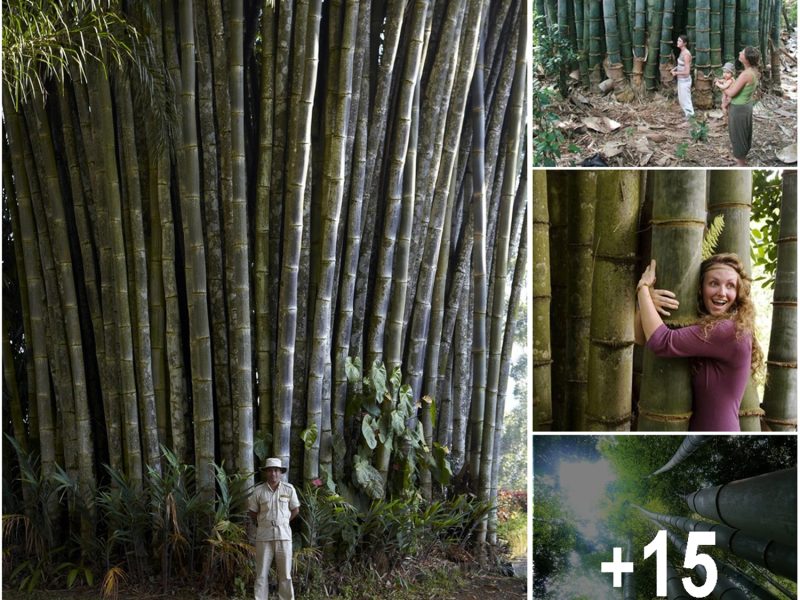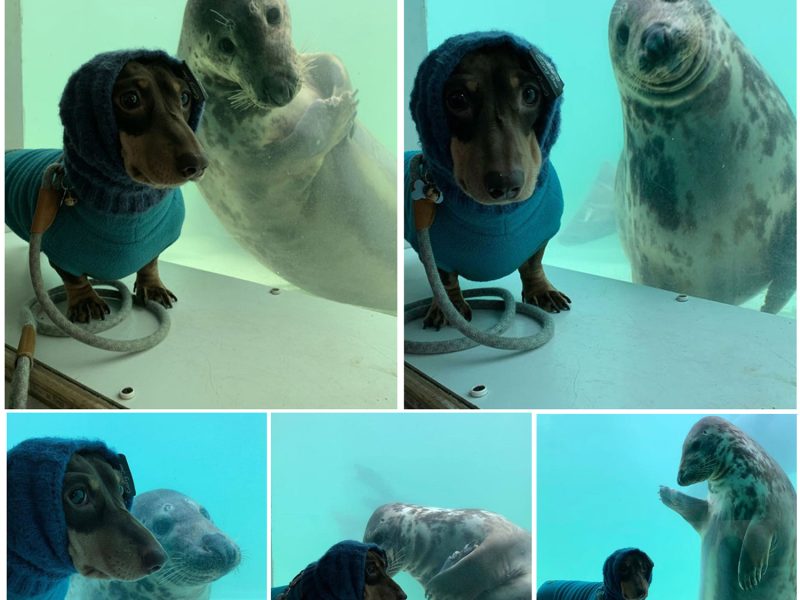A unique mushroom with true gills has been found fruiting underwater in the clear, cold, flowing waters of the upper Rogue River in Oregon.
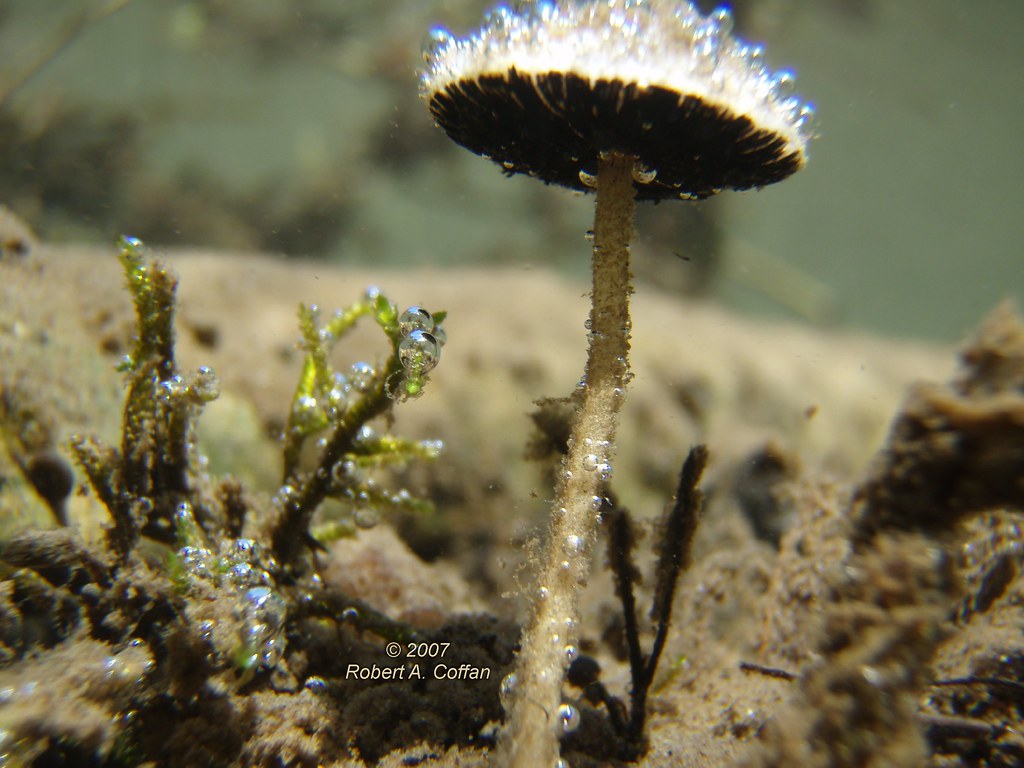
Photo: Robert A. Coffan/OggiScienza
When Southern Oregon University professor Robert Coffan discovered psathyrella aquatica, he wasn’t actually looking for it. When during a family picnic he waded into the Rogue River, Coffan spotted a pale little mushroom growing out of the riverbed in the flowing water. He immediately realized he was seeing something special.
The professor then convinced mycologists Darlene Southworth and Jonathan Frank at Southern Oregon University to have a look. Even though the team were initially skeptical when seeing the pictures of this mysterious aquatic mushroom, five years later, they presented Coffan’s discovery to the world as a new species.
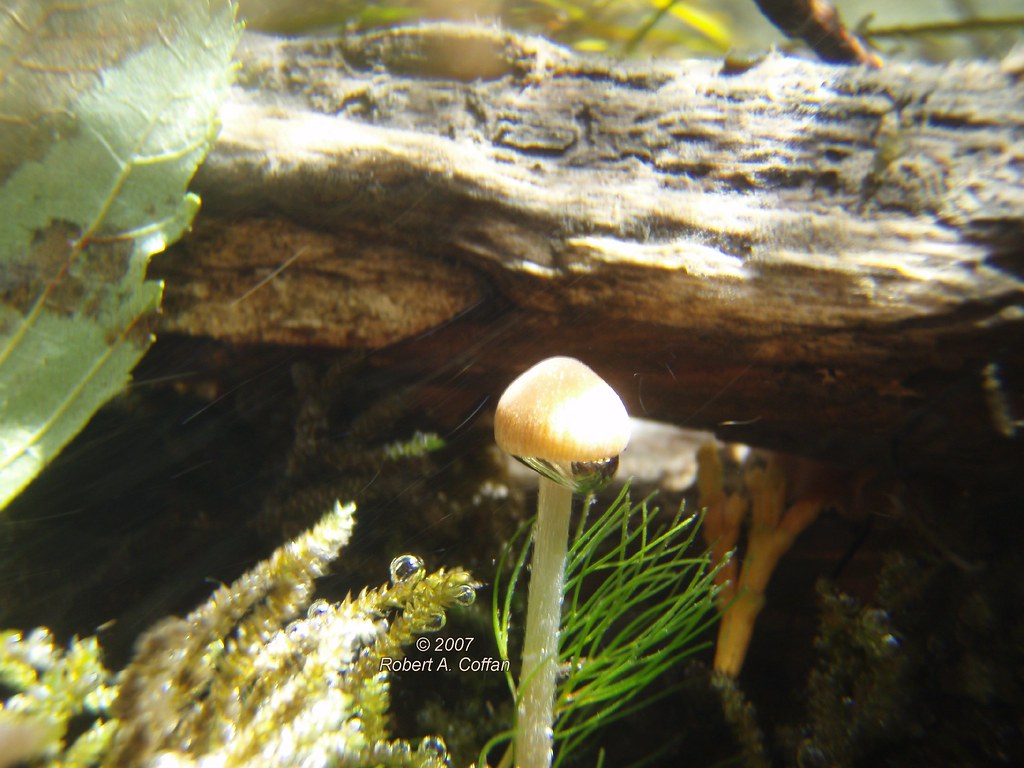
Photo: Robert A. Coffan/OggiScienza
Even though there exist cup fungi that growing underwater, Psytherella aquatica is the only species of true, gilled mushroom living in the deep. “It looks like something you could buy at Safeway and put on a pizza” Southworth said.
The mushroom has a fibrous stem, brown cap, and gills, just like its terrestrial cousins. The gills have thousands of spores residing on them, tucked up under the mushroom cap and waiting to mature and be released. When that happens, on land the mature spores are typically carried by the wind to locations where a new generation of mushrooms can grow. However, in the case of P. aquatica, the fruiting body of the mushroom is fully submerged under the water. So then, how are the spores of this underwater mushroom dispersed? In particular, how can any spores ever get carried upstream from the mushroom? These are questions that still have to be answered by science.
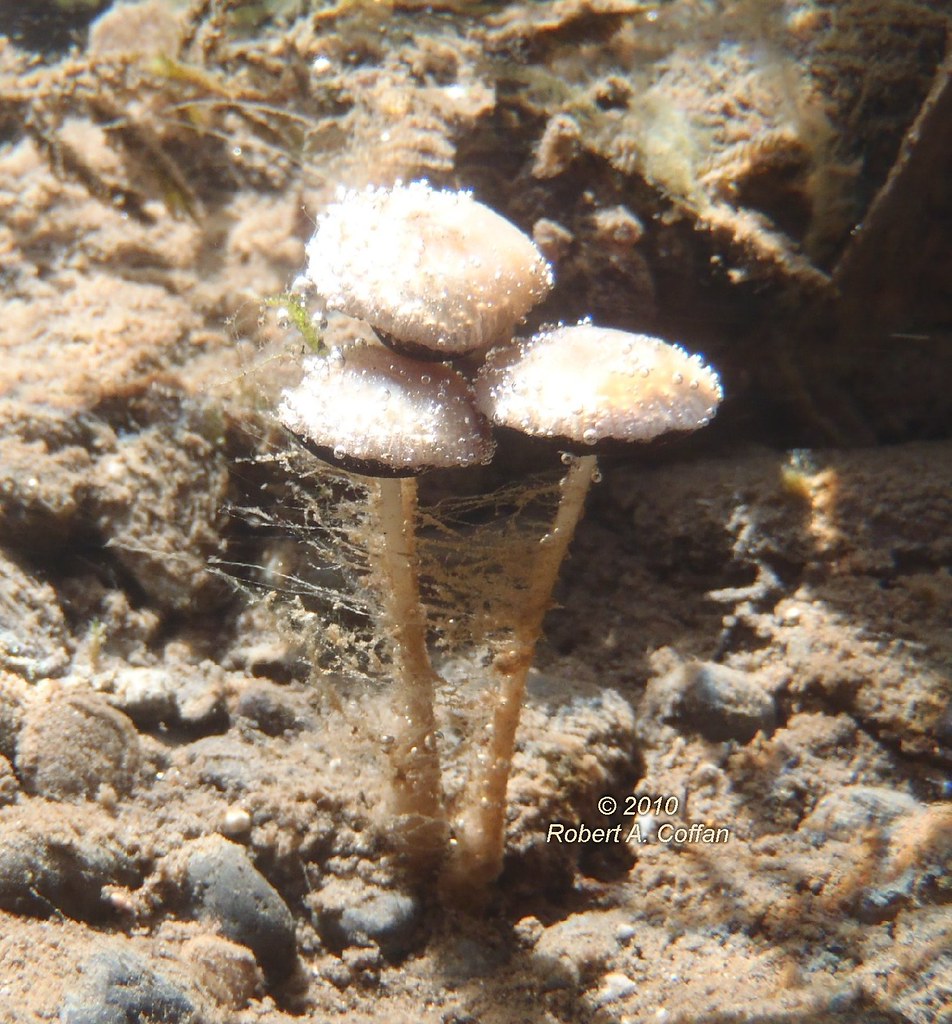
Photo: Robert A. Coffan/OggiScienza
According to Frank, figuring out how to collect the mushroom and get it back to the lab intact was another puzzle to solve.
“I remember, grabbing bottles and bags and an aquarium. Things you don’t usually take on a mushroom hunting trip… in the end I stuck it in a little mason jar and sealed it up very tightly.”
The sample was finally at hand, but getting the scientific community to accept a new species was another challenge to overcome. At first glance, psathyrella aquatica looks very much like hundreds of known species of little brown mushroom that grow on land. What is more, psathyrella are a group of mushrooms famous for giving mycologists headaches as they are so difficult to tell apart.
The scientists started out by comparing the collected samples of the underwater mushroom and its spores under a microscope to hundreds of dried specimens in the psathyrella genus. Then, they sequenced a fingerprint region of the underwater mushroom’s DNA, and compared it against DNA in a national database and sequences from the dried samples. They concluded that the underwater mushroom had a unique DNA fingerprint. After they published their work, psathyrella aquatica was listed as one of the most significant species discovered that year.
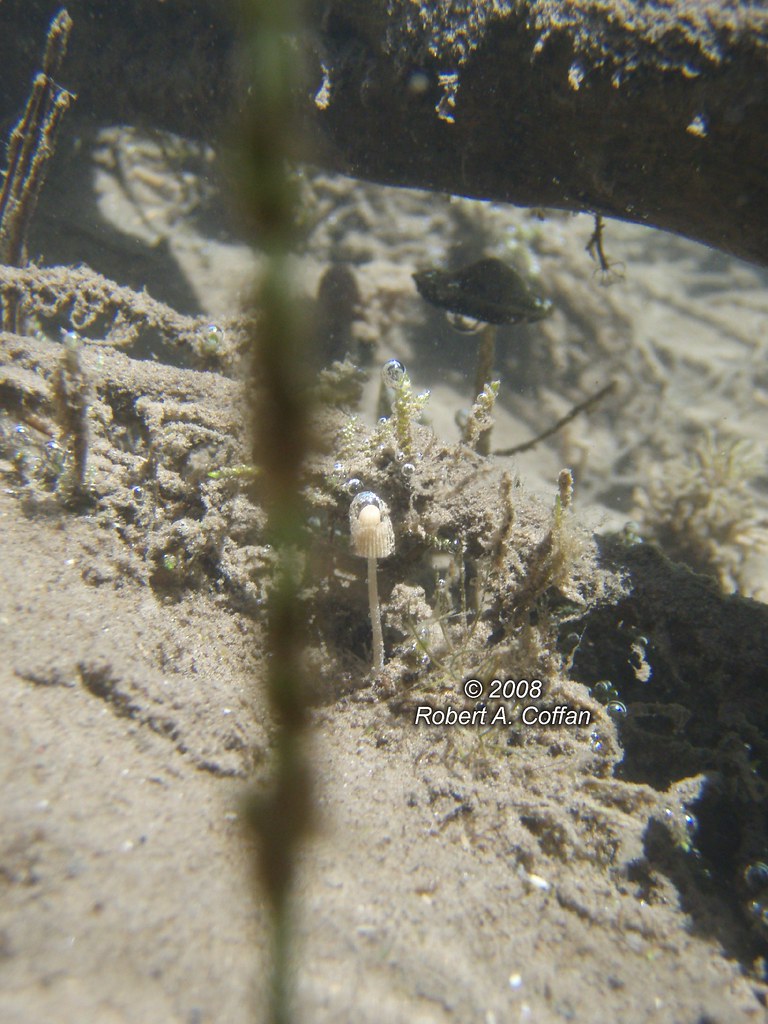
Photo: Robert A. Coffan/OggiScienza
Now the scientists are trying to understand how this unique mushroom adapted to a life underwater, and where exactly it lives. So far, only two populations of the mushroom have been found in a single mile stretch of the Rogue River, not far from Crater Lake National Park.
“We know it’s growing in a year-round stream that’s clear, cold, and volcanic. But we don’t know which of these things make it a particularly suitable habitat for this mushroom,” Southworth said. “So we’re trying to find it in other places.”
The mushroom fruits in August, and that’s the time when Southworth recruits volunteers to search for new sites every year. “It’s pretty damn hard to spot,” Southworth says. But she tries again every year and hopes people across the northwest will keep an eye out for it, too.
“I think we should be looking on Mt. Hood, all up and down the spine of the Cascades…the Olympics, the Sierra Nevada, the Alps and the Andes. Wherever there’s fast moving cold water, have a look. And call us.”
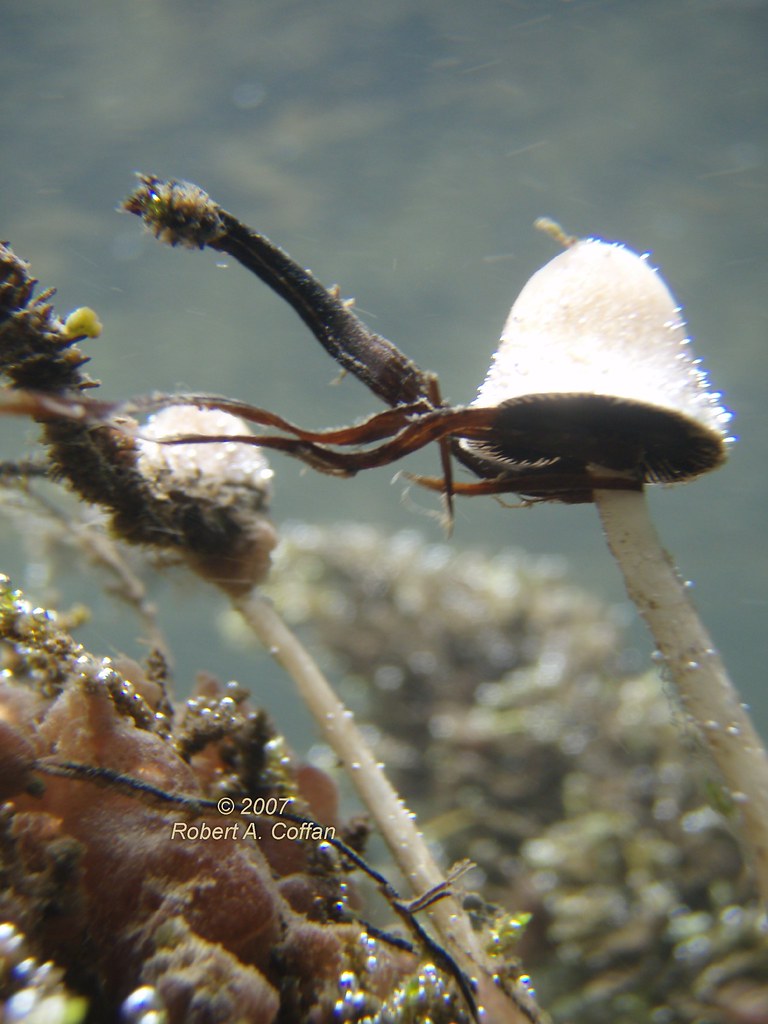
Photo: Robert A. Coffan/OggiScienza
If you like picking mushrooms, there’s probably another question on your mind by now. Or the question. Is the mushroom edible? Well, it could be, since the other members of the Psathyrella genus are non-toxic. But P. aquatica is encountered too infrequently to be securely considered table fare. It’s also very tiny and extremely difficult to find, so it would be almost impossible to gather a dinner’s worth. That said, the scientists suspect the mushroom species is indeed a food source for aquatic insects, which in turn are prey for fish.
Unfortunately, the team receives no funding to study the mushroom, and Southworth, a professor emeritus, has been a volunteer in her own mycology lab for the past decade or so. That’s a pity, because more support for such work would mean the discovery of more unusual aquatic inhabitants such as this one!
